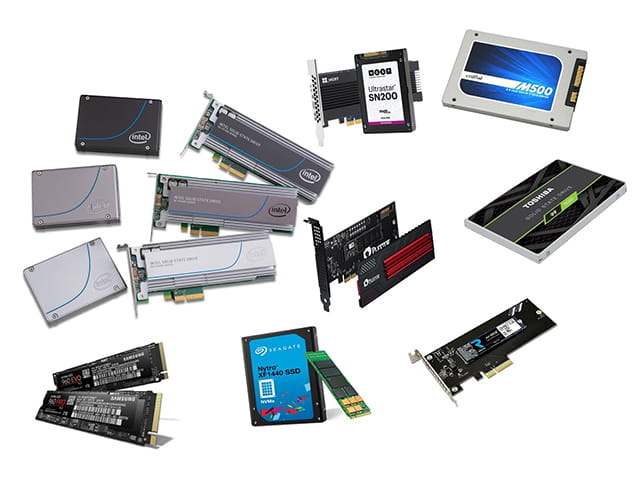Tipe Slot Ssd
SSDs are ubiquitous in modern computers, from powerful gaming PCs to professional laptops.
However, if you want to move from mechanical to solid state storage, there are a few things to take into account.
Auto Switch:Storage slot is workable for both SATA SSD and PCIE SSD. M.2: M.2 is the storage stardard and most common width is 22 mm. The length also can be 42 or 80 mm which are called M.2 2242 or M.2 2280. M.2 SSD can be connected via PCIe or SATA. Before parchase an SSD, you should check the specification of your desktop. Yang saya maksudkan di sini hanya mengakses UI defrag sekedar untuk mengetahui tipe drive. Ada juga cara lain untuk mengetahui tipe drive kamu, SSD atau HDD, yaitu dengan menginstal aplikasi pihak ketiga. Misalnya: Speccy, ini merupakan aplikasi yang dapat memberikan wawasan terhadap PC kamu, termasuk apakah tipe drive kamu SSD atau HDD.
SSDs appear in a multiple form factors, from 2.5-inch SATA drives to RAM-like M.2 modules.
It also happens to have dual M.2 solid-state drive (SSD) slots, as well as space for a 2.5-inch SATA SSD. However, not all spots can be occupied at the same time. If you're interested in upgrading. The final form factor is the dedicated PCIe card. These SSD’s are large, single-slot storage drives which connect to a PCI Express slot on your motherboard – similar to a graphics card.
All these devices use the same NAND flash storage technology, but differ in the way the memory is accessed and how they connect.
Before buying an SSD, here’s an overview of what is on offer.
Specifications

The durability and capabilities of an SSD are detailed in its specifications, as shown below.
- Storage (GB/TB): Total capacity.
- Form Factor: The shape and size.
- Interface: The transfer protocol.
- Sequential Read/Write (MB/s): The speed the drive reads and writes data.
- Random Read/Write (IOPS): The average number of I/O operations per second.
- Mean Time to Failure (hours): The average expected lifetime.
- Endurance (TBW): The expected lifespan measured in TB written.
SATA Drive
A SATA SSD has the same form factor as a standard hard drive and uses a SATA cable to connect to the motherboard.
These SSDs commonly come in the 2.5-inch form factor (the size of a laptop’s hard drive).
The latest SATA SSDs use the SATA revision 3.0 interface, which has a maximum transfer speed of 600MB/s.
These drives are relatively cheap compared to other form factors and are commonly found in professional laptops and mid-range desktop PCs.

M.2 Module
The M.2 (formerly NGFF) SSD form factor was developed to provide support for SATA and PCIe interfaces.
M.2 SSDs are long, thin PCBs with multiple NAND Flash modules, and connect via an M.2 connector to an M.2 slot on the motherboard.
There are several types of interfaces and controllers used by M.2 SSDs, mainly:

- SATA
- PCIe
- NVMe
Tipe Slot Ssd Drives

M.2 SATA drives do not look like conventional SATA drives and connect to an M.2 port, but use the same interface and are also limited by the 600MB/s cap.
M.2 PCIe SSDs use the PCI Express lanes exposed via an M.2 slot to connect to the computer and provide increased performance.
M.2 PCIe SSDs can use two different controllers: AHCI and NVMe.
AHCI PCIe SSDs provide backward compatibility for systems with SATA support, but have limited efficiency due to AHCI being designed for mechanical drives.
NVMe PCIe SSDs have vastly superior performance, as the interface was designed for high-speed flash storage.
M.2 PCIe NVMe SSDs can boast transfer speeds many times that of conventional SSDs and feature thousands of processing queues instead of the single queue provided by older interfaces.
PCIe Card
The final form factor is the dedicated PCIe card.
These SSD’s are large, single-slot storage drives which connect to a PCI Express slot on your motherboard – similar to a graphics card.
Dedicated cards use the NVMe interface and usually include heat sinks to dissipate heat.
These devices can usually only fit in desktop PCs and are used in workstations or enterprise systems.
The development of smaller NVMe SSDs and the increasing popularity of the M.2 form factor have negated the need for the average consumer to purchase a dedicated PCIe SSD card.
This article first appeared on MyBroadband and is republished with permission.